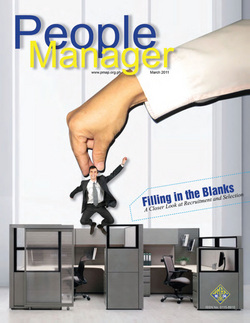10 Things I learned the Hard Way
By: Mr. Schubert Caesar C. Austero
PMAP President
Like many other HR professionals, I started my career in training and development. I didn’t know it then, but the fact that I started as a Training Assistant proved propitious. Being a trainer deepened my appreciation for continuous learning and helped me appreciate the value of individual differences. I don’t know of any trainer out there worth his or her name that doesn’t make an effort to learn new things every opportunity he or she gets. And God knows trainers wouldn’t survive inside a training room unless they see learners as individuals with individual needs.
Along the way, I have picked up some personal nuggets of wisdom that I make a point to share with my human resource management students. Here are ten of them:
1. Effective trainers master techniques and carry with them a seemingly bottomless bag of tricks, but at the end of the day, it’s really about attitude. I have learned that what makes the difference is the level of passion, commitment, dedication, and care that a trainer puts into every training effort.
2. Learning costs money but effective training is not wholly dependent on the size of one’s budget. There was a time when trainers complained endlessly about how the training budget was the first to go in times of difficulties. I am glad those days are over as trainers eventually realized that there are more than 1,000 ways to deliver learning!
3. Training is first of all a relational concept. A lot of trainers sometimes get all caught up in the psychology, and the theories, and the buzzwords… forgetting that at its very essence it is about sharing, and yes, caring.
4. There is no such thing as an “average” learner. It’s convenient to categorize learners into shapes and sizes but effective trainers know that people are more complex than that. Every learner is different and packages himself or herself differently.
5. The most “difficult” learners are usually the ones that learn the most. Like many other trainers, I learned this the hard way. I used to have resentment for learners who were more demanding, or displayed dysfunctional behaviors in class. I have realized that these behaviors were “learning behaviors.”
6. Emotional resilience distinguishes the mature trainers from those who are not. This includes the ability to not take not-so-positive incidents in a learning situation personally. The negative behaviors are never directed at the trainer; it only looks that way because the trainer is the most convenient target – he’s the one standing in front, for crying out loud.
7. The trainer is the first visual – learners walked into the training room to learn from the trainer, not from a powerpoint presentation or from a video. It’s great to have visual aids, but trainers must remember that he or she is the visual that really matters.
8. Everything inside a training room is a tool that a trainer needs to harness effectively. I’ve met many trainers who accept certain things as given – the room arrangement, the sorry condition of the walls, the location of the screen, etc. An effective trainer is one who sees all these things as contributory to the learning process – even including what he is wearing – and does not leave anything to chance.
9. Trainer style is a way of expressing one’s self rather than a set of tricks and techniques. I have learned that it is important for trainers to come across as authentic – as themselves – rather than as someone trying to be someone else’s copycat.
10. There are days when no matter how hard one tries, no matter what one does, a training program comes up short of one’s expectations. Learn from it, but there is absolutely no point in torturing one’s self over it. It’s precisely incidents like these that make trainers strive to become better.

